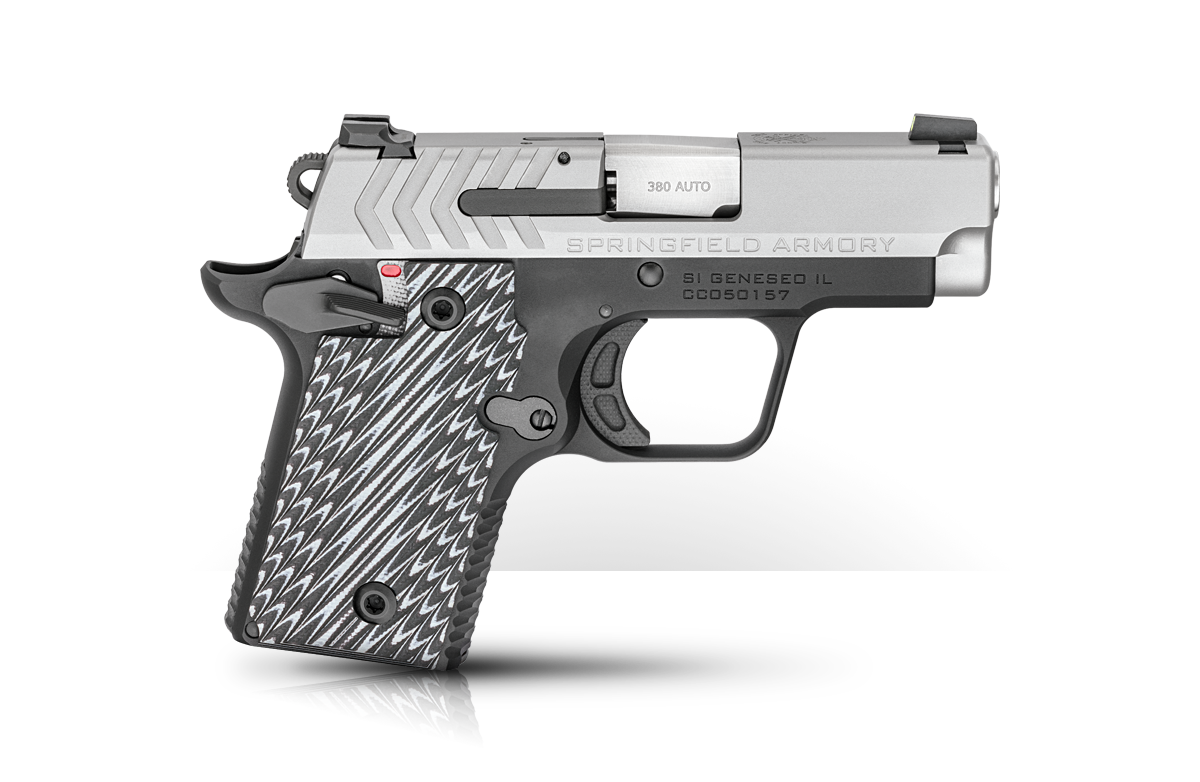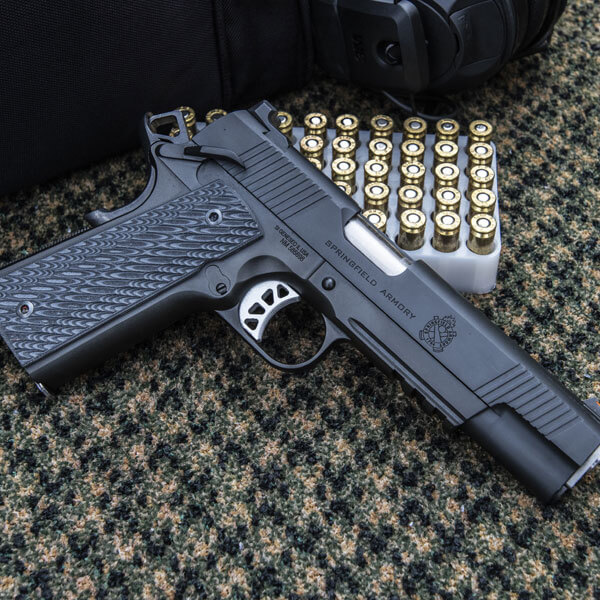Review: Springfield Armory 911 .380
August 25th, 2019
9 minute read
Yeah, I know: I’m the guy who said “friends don’t let friends carry mouse guns,” and here I am testing a .380 pocket pistol. Reviewing a .380 makes me feel like Ralph Nader driving a Corvair (millennials can Google that reference). I sometimes think Editor Ben Battles has a cruel sense of humor and needs to be reminded that being mean to old people is a hate crime. But, what the hell, here goes.
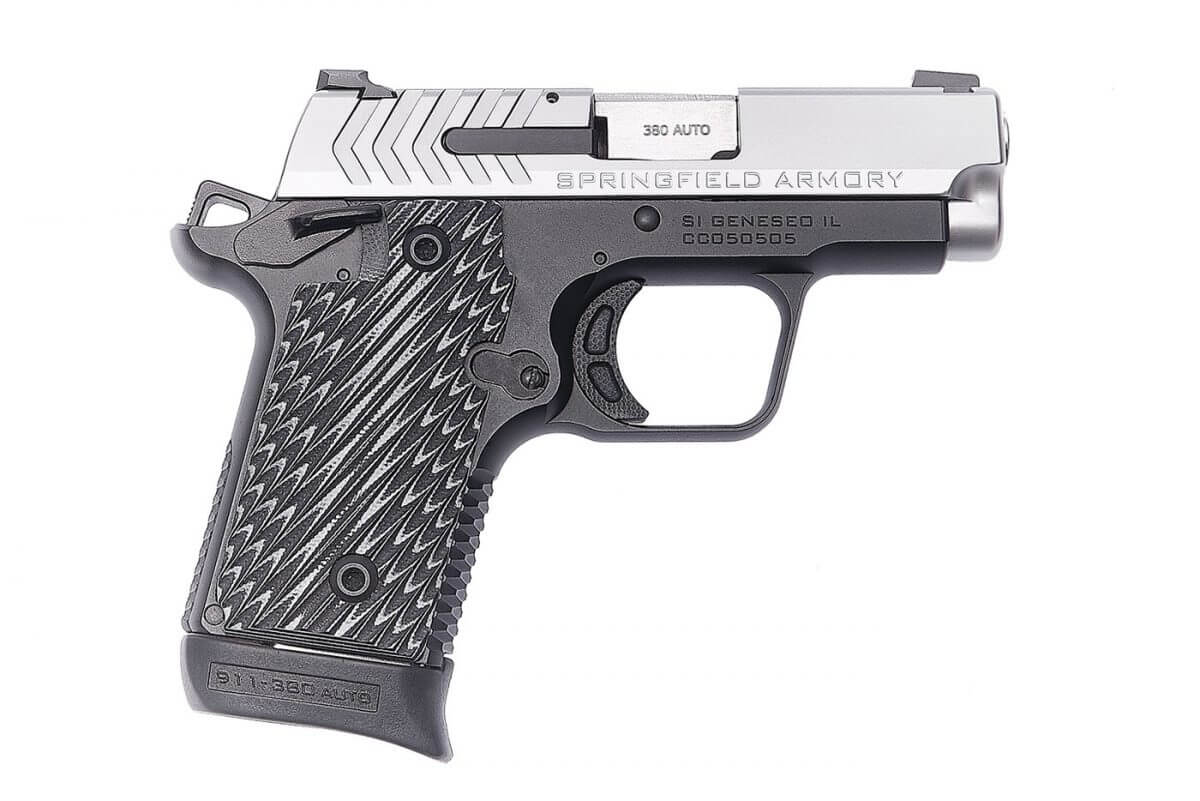
Some people can’t carry more than a .380. Physical size is a factor. So is physical shape, in the sense of both configuration and condition. Wardrobe required for work or chosen for daily life may be a factor. Sometimes, while it’s strictly legal to carry at work, it’s against company policy and a hazard to continued employment to do so, making minimum size mandatory. I get it.
The .380 ACP, created by John Moses Browning more than a century ago, is also known colloquially as the 9mm Short. It tends to come up short in wound ballistics as well.
This means that if you’re going to carry one, you want one that allows you to deliver accurate shot placement very rapidly. Springfield Armory knew that when they came up with their new 911 pistol in .380. Can this pistol manage that? Read on in my Springfield 911 review …
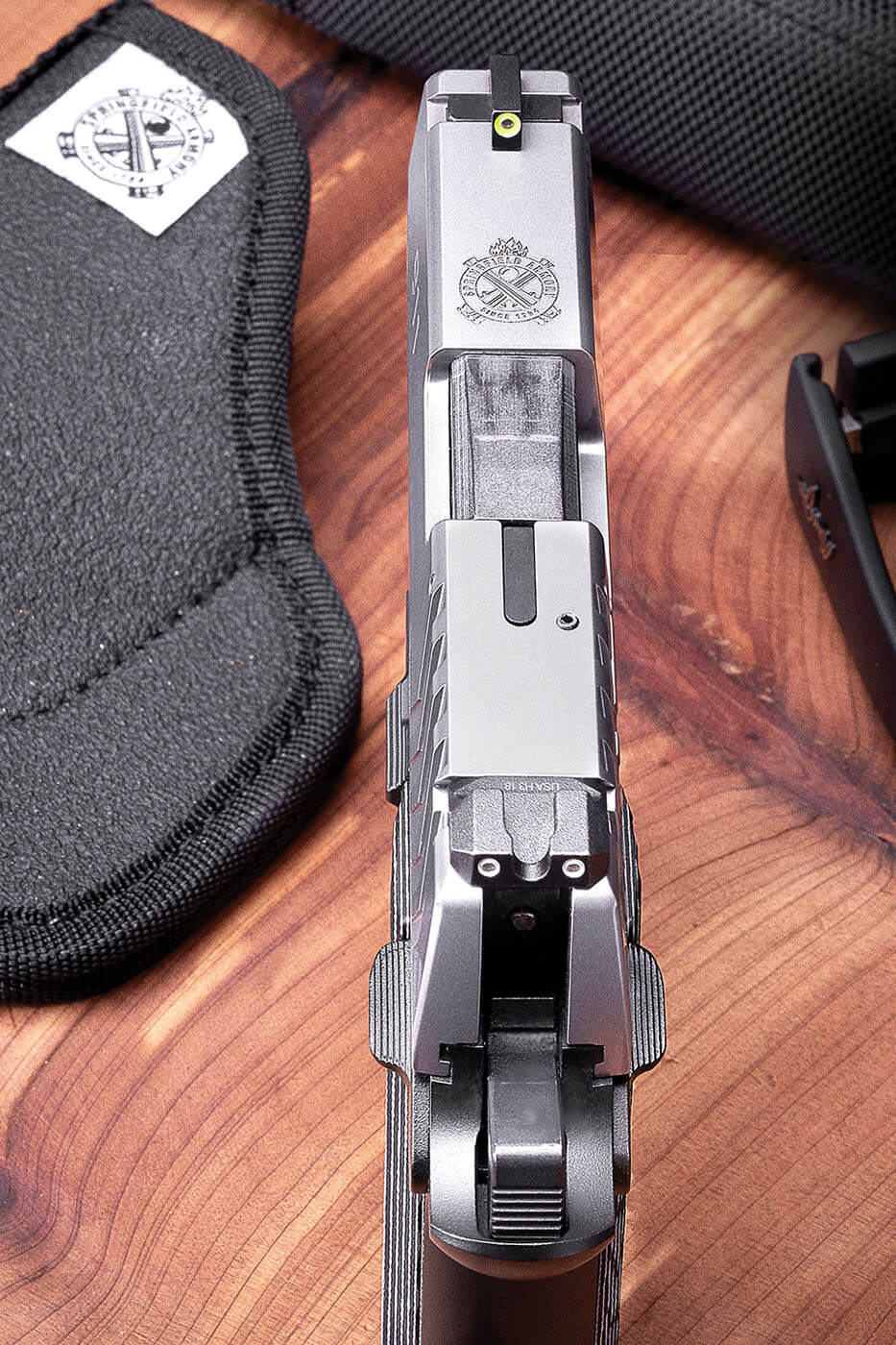
Springfield didn’t ignore the 9mm fans, though. If you want to carry a gun that throws more power downrange, check out the Springfield Armory 911 chambered in 9mm.
First Look
The Colt Pocket Model of 1908, the .380 version of the Browning-designed Colt .32 of 1903, was hugely popular “back in the day.” It was flat, slim, and easy to shoot straight in spite of its tiny sights. Colt resurrected that concept with their Government .380 and Mustang series. At the risk of oversimplification, these were partly resurrected 1903/1908 models, and partly scaled-down 1911 models. Colt still lists the Mustang in their catalog, and today the concept is increasingly popular. Others have more or less copied it, notably Browning Arms. Springfield Armory now joins that wave with the 911 model, our sample in .380 being serial number CC050505 (hey – that number has a rhythm to it).
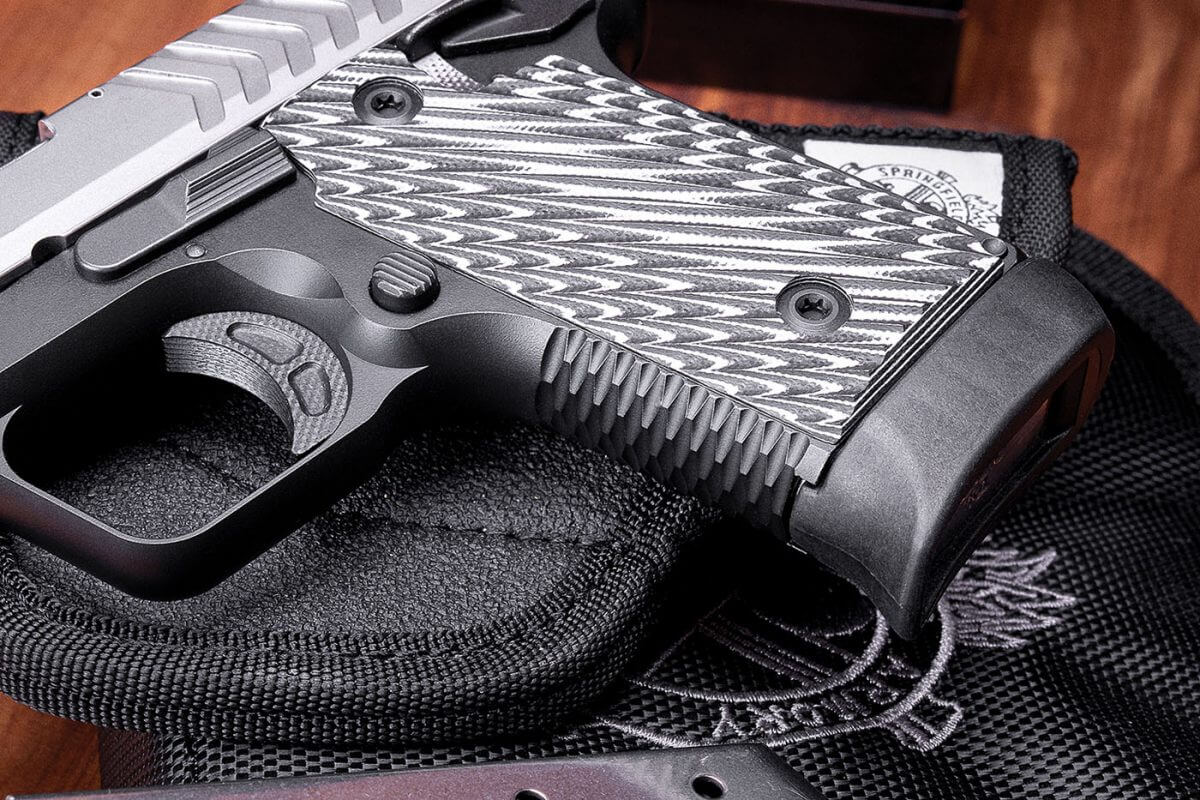
With a frame that’s short front to back and a relatively short trigger, the “trigger reach” on this pistol places the “go button” right under the distal joint of the index finger of a lot of folks who have trouble with trigger reach, and on the pad (the center of the whorl of the fingerprint) if you have very short fingers. The pistol has G10 grips, which are rough enough to give an excellent grasp with wet hands in rapid fire, and just thick enough that my own thumb doesn’t either block the trigger finger or hit the magazine release button inadvertently when that digit is curled down. (Why curl down the thumb? Because with the .380’s mild power, a high thumb making inadvertent contact with the slide could slow down the cycle enough to jam the pistol.)
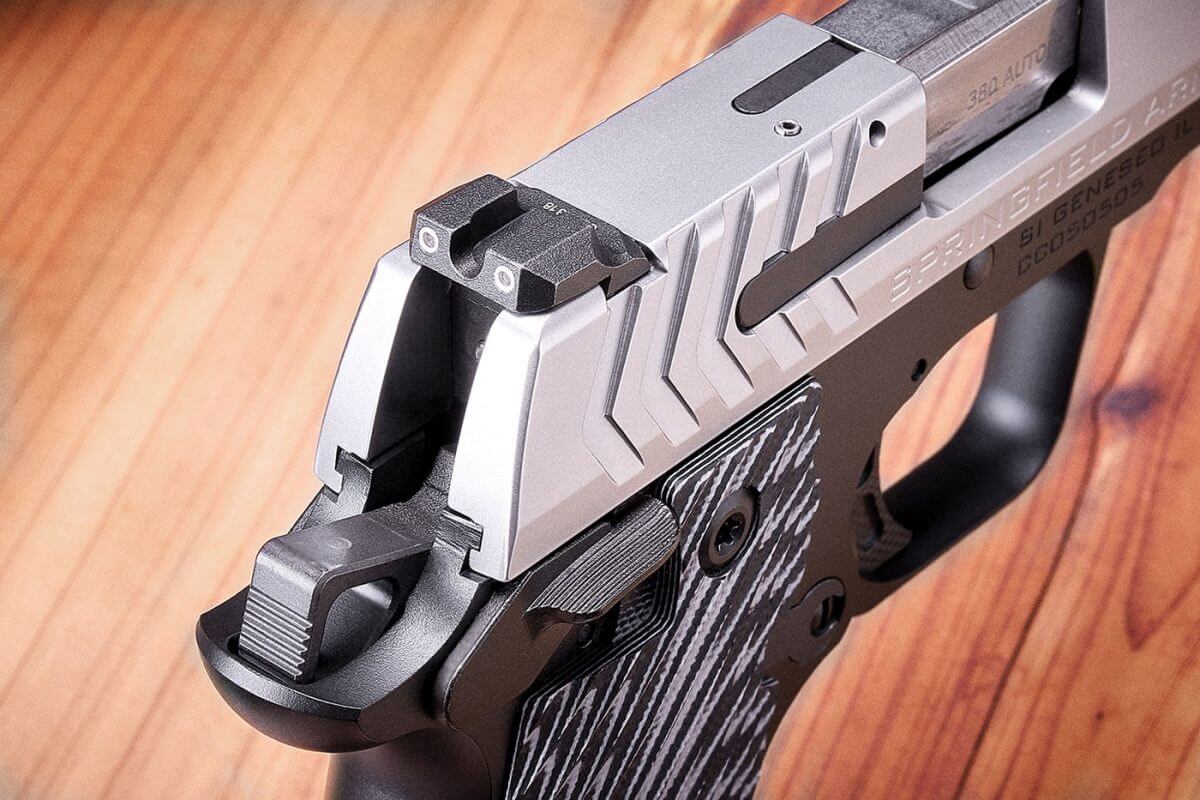
Having discussed the bad news with the .380’s power level and slide cycling, let’s discuss the good news. For those who don’t have strong hands (which could be any of us if we are injured in the course of a fight) once the hammer is cocked rearward to eliminate mainspring resistance against the slide, the .380’s very light recoil spring makes it very easy to rack the slide of the Springfield 911.
Trigger Pull
Depending on which expert you listen to, .380 Auto “stopping power” is either at the very bottom limit of “minimum acceptable,” or sub-par. Ability to shoot accurately is thus critical, and trigger pull characteristics are thus critical as well. Our test sample averaged 8.73 pounds, very consistently, on a Lyman digital trigger pull scale.
That’s the science part. Now, let’s talk about the human factors part. All of the testers in this review, each of them award-winning shooters with vast trigger-pulling experience, estimated this gun’s pull weight at much less than that when they tried it! At least one estimated less than half. Personally, I’d have put it in the six-pound range.
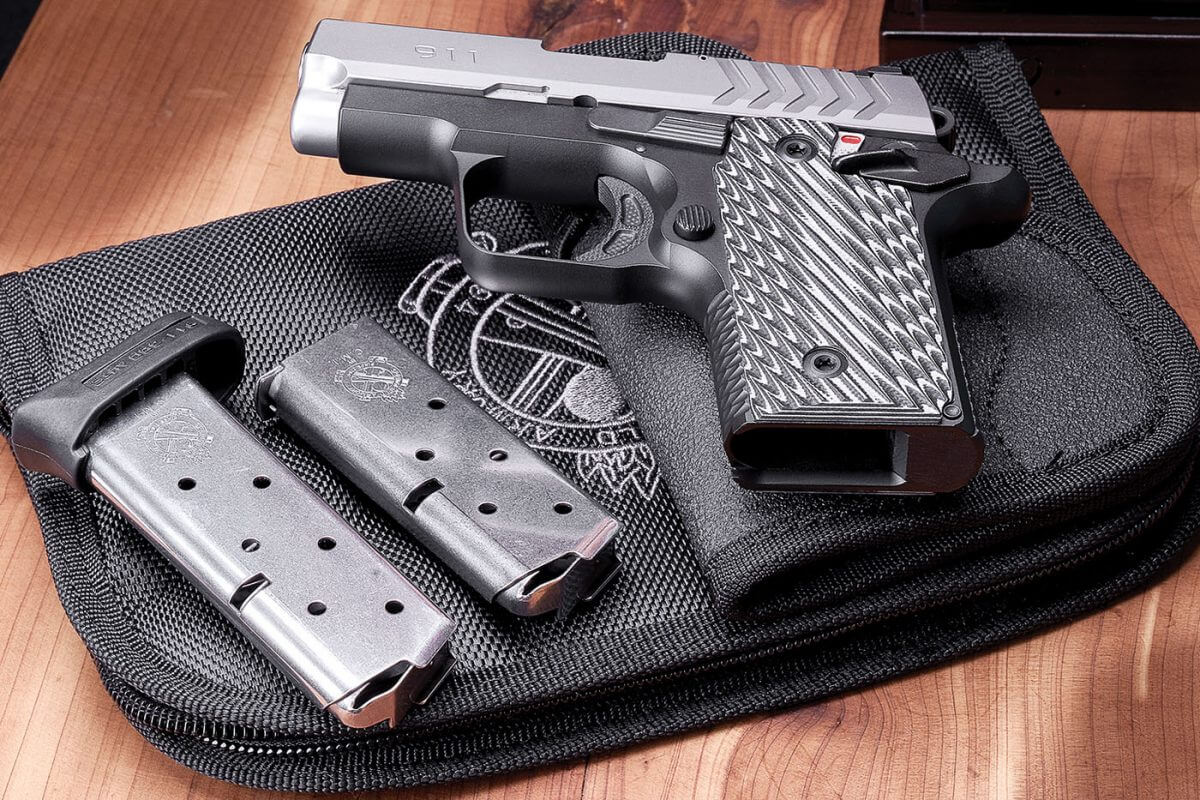
Explanation: the short trigger reach “gets more finger onto the trigger.” This in turn gives more leverage. More leverage equals less effort to press that trigger to the point of the shot. Dry fire a Springfield Armory 911 in the gun shop and see for yourself. You’ll say, “No WAY that’s almost nine pounds.” Then put the trigger on a scale…
It’s something I’ve seen with other 1911 style pistols with very small frames. Our test 911 .380’s trigger had a very short take-up, and gave a clean, even break for every shot.
Springfield 911 Accuracy
Protocol: 25 yards from a solid two-hand hold on a Caldwell Matrix rest on a concrete bench. Five-shot groups measured (shows potential for the experienced shooter from the most solid possible position in calm conditions) and also the best three hits, which decades have taught me will about equal the same gun/ammo performance for all five shots from a Ransom machine rest.
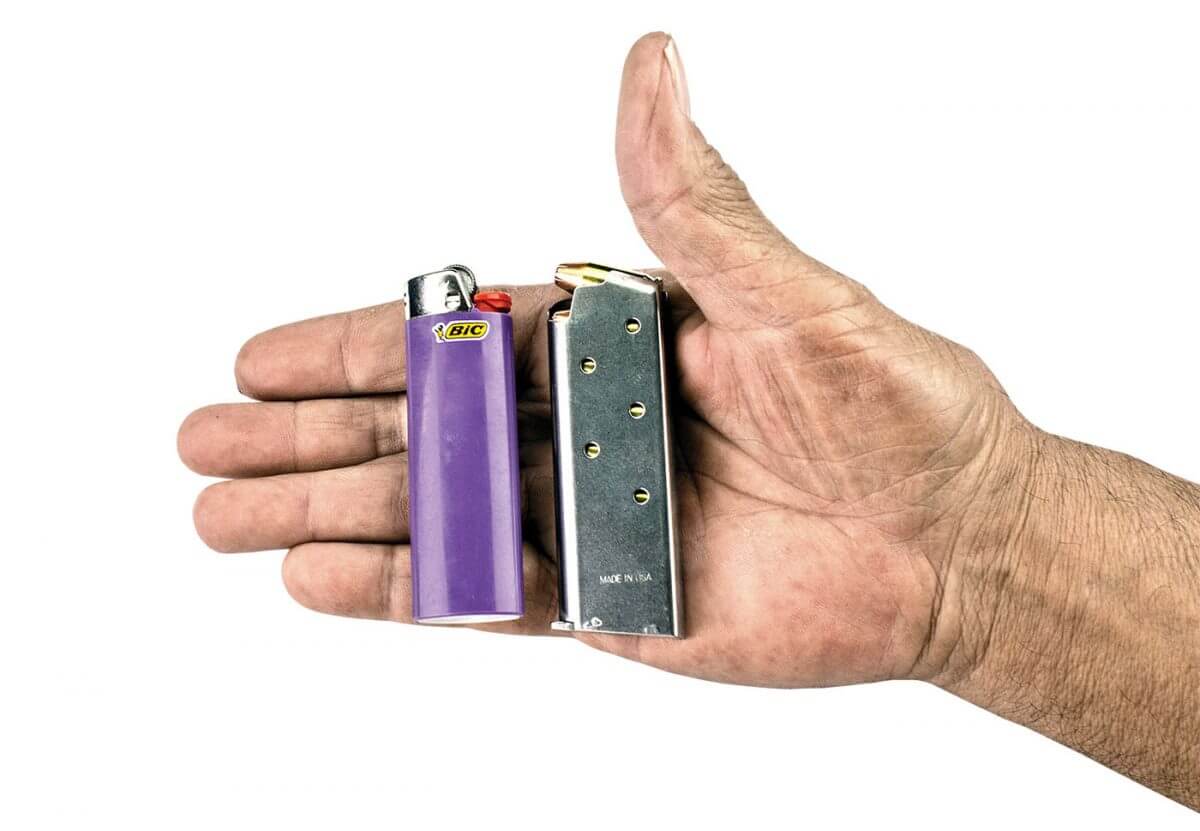
One major police department tried a high-tech load when they approved .380 for off duty and backup, then said the hell with it and switched to Speer Lawman .380 FMJ. That ammo in this gun gave us a dismal 6.53” group for all five shots, with the best three in 3.95”. For perspective, the “gun magazine rule of thumb” is that “4 inches at 25 yards for 5 shots is acceptable accuracy from a service pistol.” Tiny pocket guns like this one get cut a lot more slack. Unfortunately, bad guys don’t cut you slack for being farther than belly-to-belly distance when you have to return fire at them.
My preferred load when I have to carry a .380 is the Hornady XTP 90-grain, which gives more or less adequate penetration with at least some expansion. In the Springfield Armory 911, it gave me 3.80″ for all five shots, with four in 2.50″ and the best three in a much more pleasing 1.45″, though the group was about three inches low with post-in-notch sight picture.
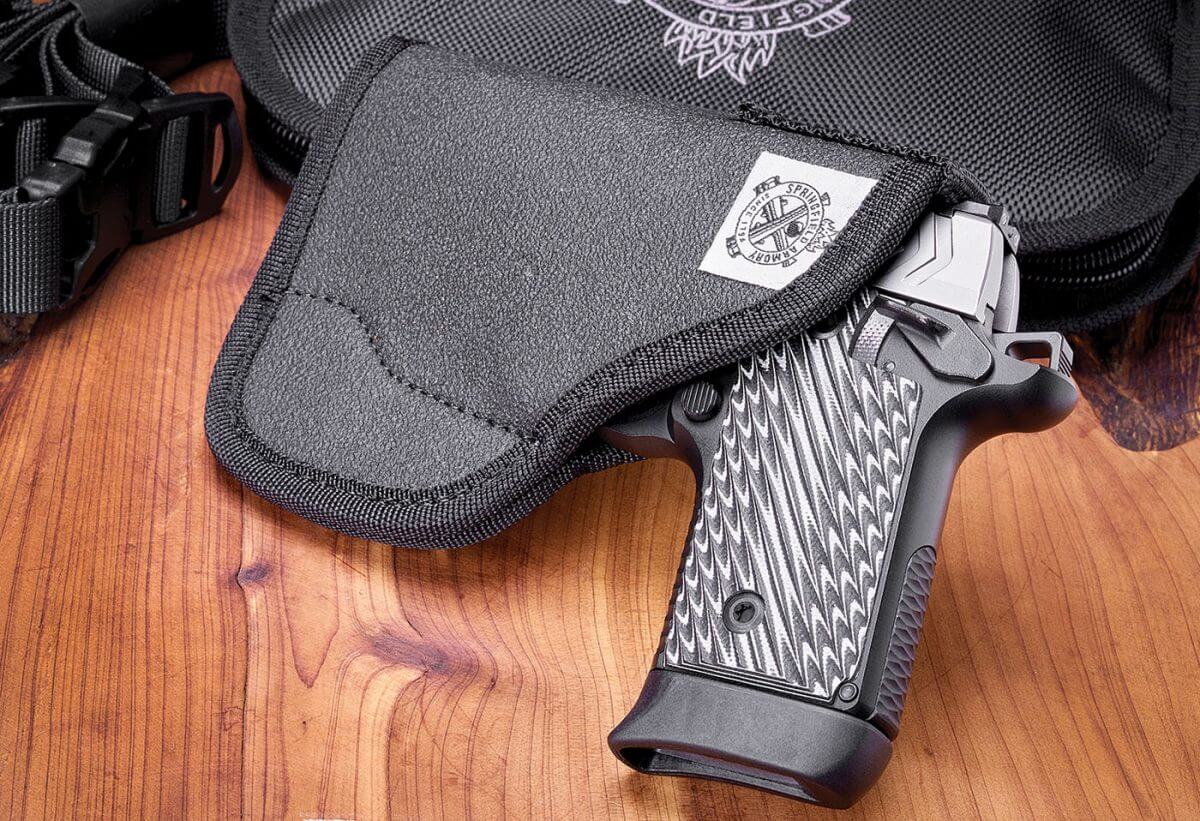
Winchester’s relatively new PDX-1 95-grain hollow point, however, was the star of the show! It put all five shots into exactly 2.00″ at 25 yards, and the best three in 0.40″, with two of the hits connected and one in closer-than-air-kiss distance. These were, however, a little more than two and a half inches low from post in notch sight picture at point of aim.
I tried aiming with the dot of the front night sight instead of the top edge of the post in notch silhouette, which generally brings hits up higher. It did, but still not quite to point of aim/point of impact. Even at seven yards, hits were a bit low. Still, at seven yards, the 911 put a full mag of .380 ball into a bit over an inch from two-hands standing.
911 on the Clock
To see how the ergonomics worked under time pressure, I took the 911 to the Action Target Bianchi Plates on my range. It’s a bank of six eight-inch steel discs. In Glock matches you shoot those four times in the Pocket Glock division, each time with no more than seven rounds in your pistol. With only one make-up shot allowed and a ten-second penalty for any plate not hit, you want “all deliberate speed.” This also gave me a chance to compare the “shootability” of the 911 with the stubby concealed magazine versus the longer extended one.
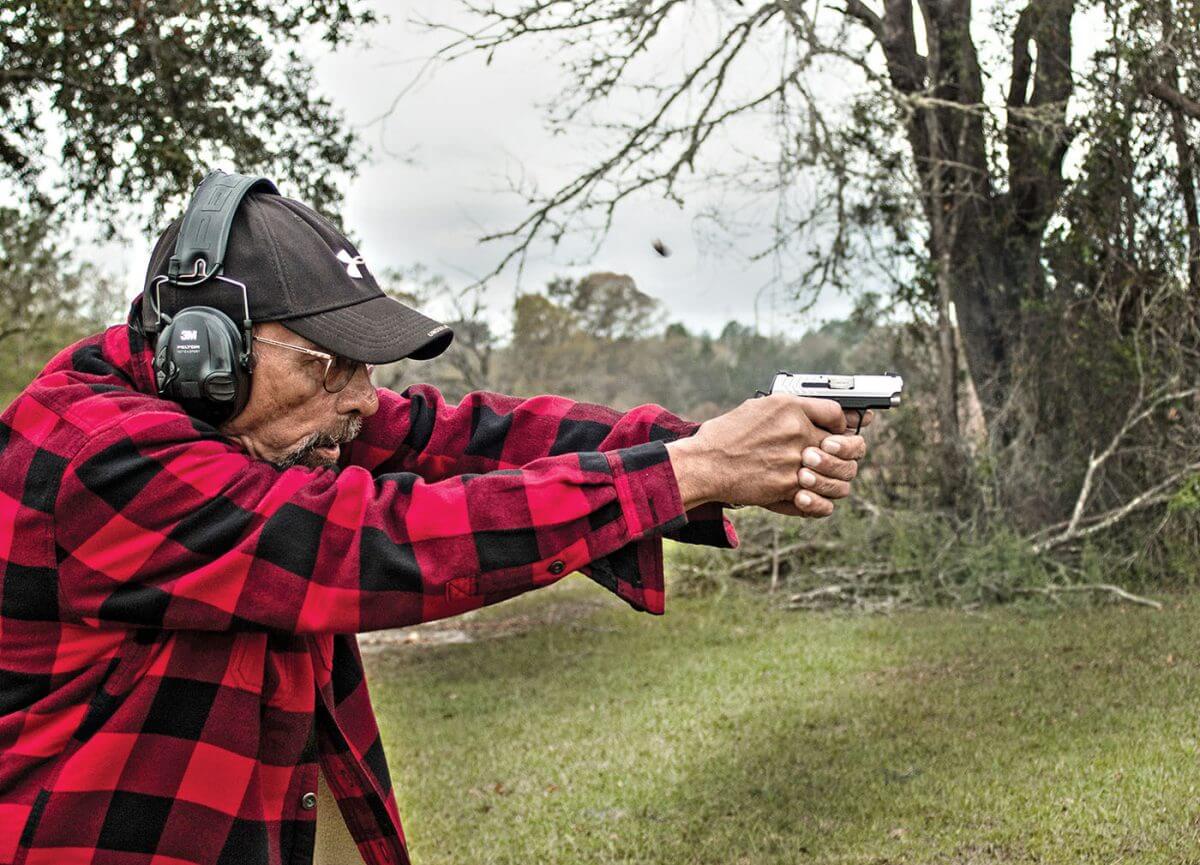
With my pinky finger curled under the butt of the 911’s short magazine, times were 4.04 seconds, 6.03 (needed the seventh shot, dammit), 5.41, and 4.79 for a total of 20.27 seconds. The longer magazine ran a total tally of 20.87 seconds (needed the seventh shot again at one point). In the ten days prior I had shot Pocket Glock matches in Montgomery, Alabama and Tallahassee, Florida scoring 20.50 and 19.79 seconds respectively, so the new 911 .380 was right in the ballpark with my familiar Glock 42 in the same caliber.
Specifications
Here are the specs on the Springfield 911 Stainless I review in this article:
| Chambering | .380 ACP |
| Barrel | 2.7″ 416R Stainless Steel |
| Weight | 12.6 oz (unloaded) |
| Overall Length | 5.5″ |
| Sights | Pro-Glo Tritium/Luminescent Night Sights |
| Grips | G10 |
| Action | Single action |
| Finish | Stainless |
| Capacity | 6+1, 7+1 extended magazine |
| MSRP | $536 |
Perks and Quirks
I liked the pocket holster that came with the 911, a concept Ruger appears to have brought to the market last year with their LCP-II. The 911 carried flat against the thigh, and in pocket carry I found the ambi thumb safety reassuring. The twin levers are the optimum size, and adjusted perfectly for positive but easy on- and-off. With the hammer cocked and locked, the upper rear of the slide is much less pronounced and square than on striker fired guns, which don’t clear the pocket for me nearly as smoothly and surely as the 911.
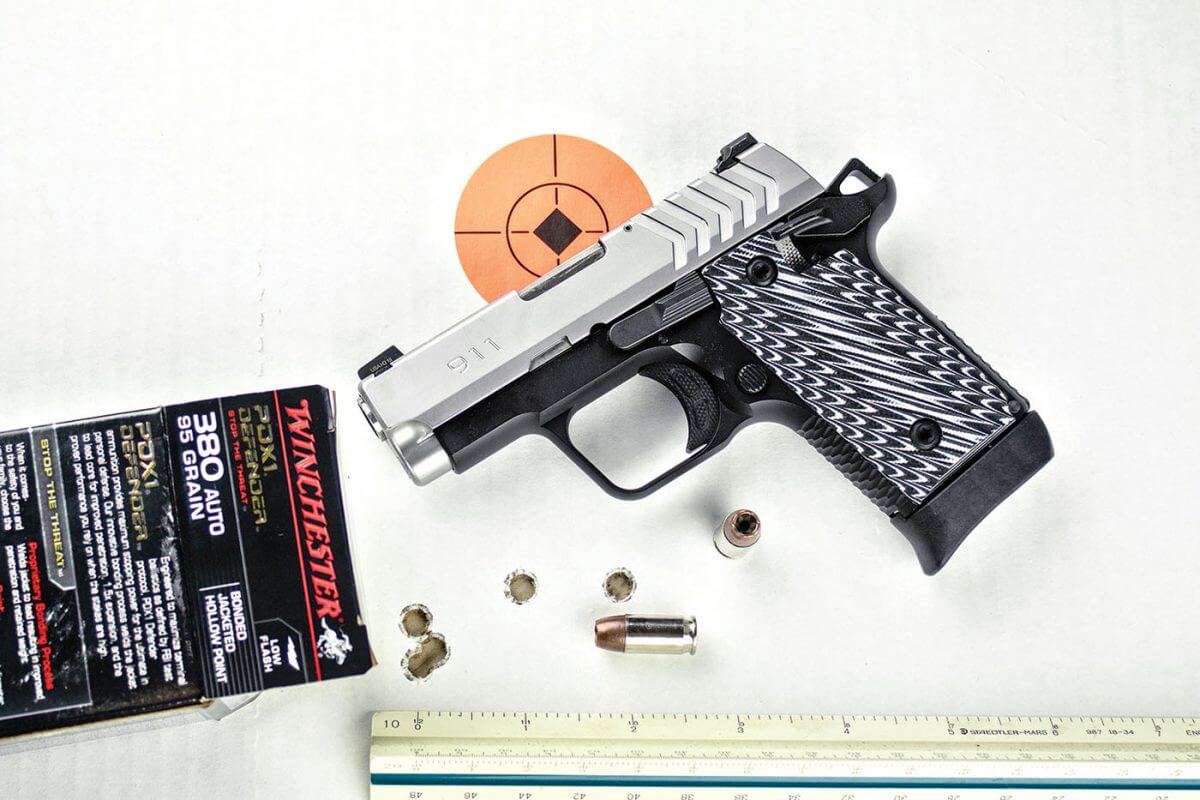
Some small .380s can have a nasty kick. This one didn’t. It sounds like a cliché, but it really did feel as if I was shooting a .22. The sights didn’t really seem to move on recoil.
I love those big, easy to see sights; they’re what you want for the surgical accuracy you need with .380. The front sight on ours needed to be a tad shorter, though. Reliability? In hundreds of rounds with multiple shooters from big to small, we only had one problem. There was an incompatibility I couldn’t diagnose between Remington-UMC 95-grain ball, the load I shoot in Pocket Glock GSSF matches because it is the most accurate I’ve found in my Glock 42, and the longer seven-round 911 mag. When I was shooting the plates, I had repeated stoppages, all 12 o’clock misfeeds.
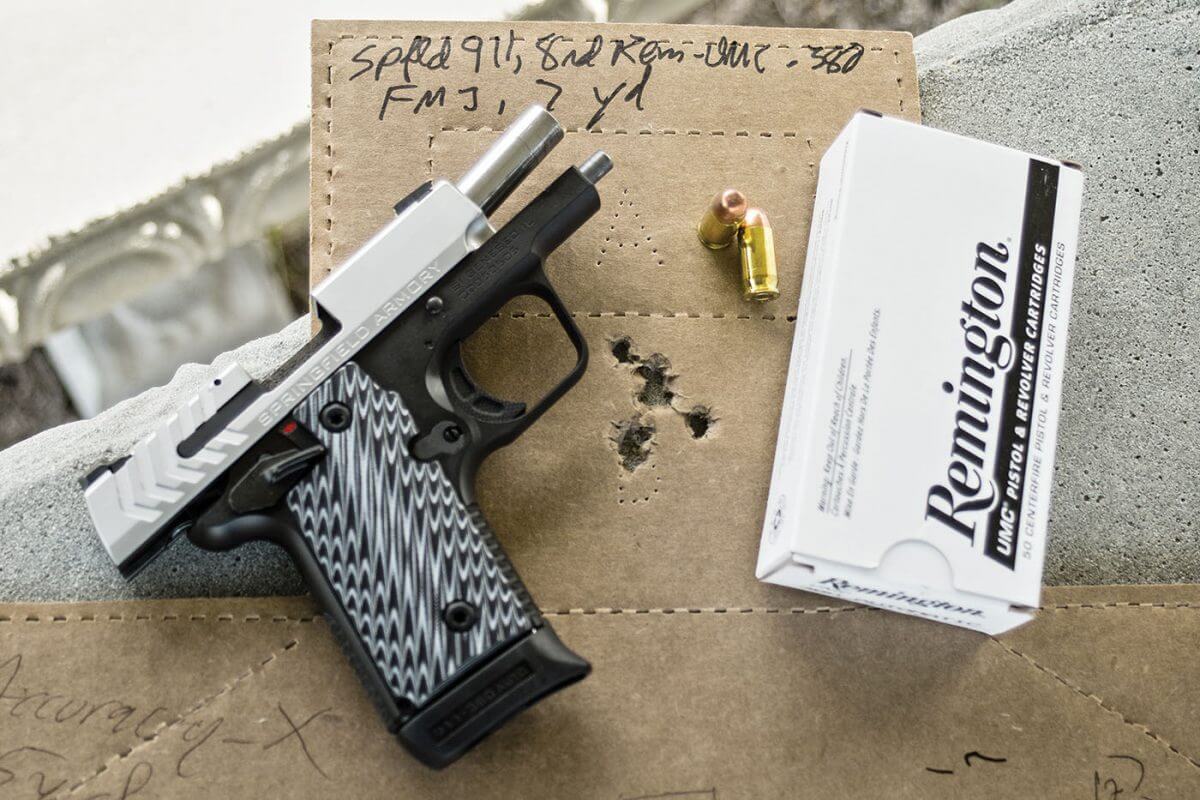
When I tried assorted other ammo in that mag, the gun worked fine, and when I ran the Remington-UMC through the gun with the short 911 mag, that ran fine too. Can’t put my finger on it. It’s a good example, though, of why we must always test our ammo in that particular gun and those particular magazines before using them for anything serious. Overall, the test crew and I liked the little 911 pistol. If you’re in the market for an easy to run, easy to shoot, easy to conceal .380, you definitely want to look at this one. Pro-Glo night sights, grippy G10 stocks, only 12.5 ounces unloaded, and all for a very reasonable price.
Editor’s Note: This article was written by Massad Ayoob and shared with us by On Target Magazine.
Join the Discussion
Featured in this article
Continue Reading
Did you enjoy this article?

 110
110




